5th September 2013 – Mandalay 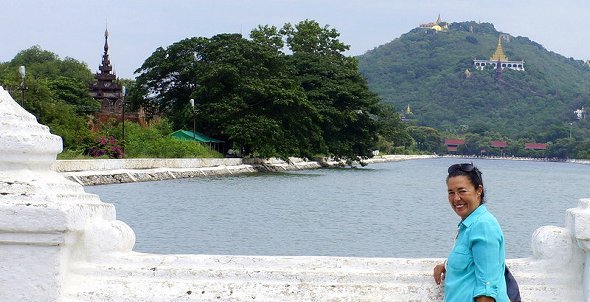
The bridge across the moat to the Mandalay Palace, which used to be the capital of Myanmar in 1857, during the reign of King Mindon Min. That’s Mandalay Hill behind me in the photo, overlooking the citadel 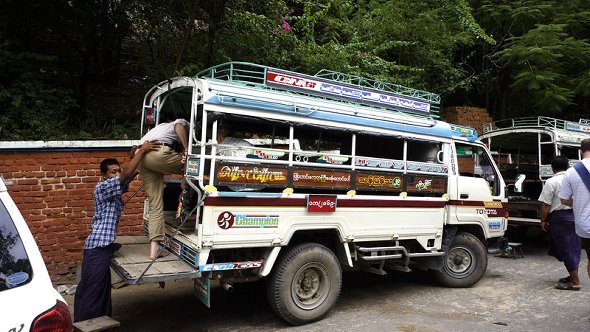
Pushing us into the tuk tuk’s all part of a day’s work To visit the Shrine at the top 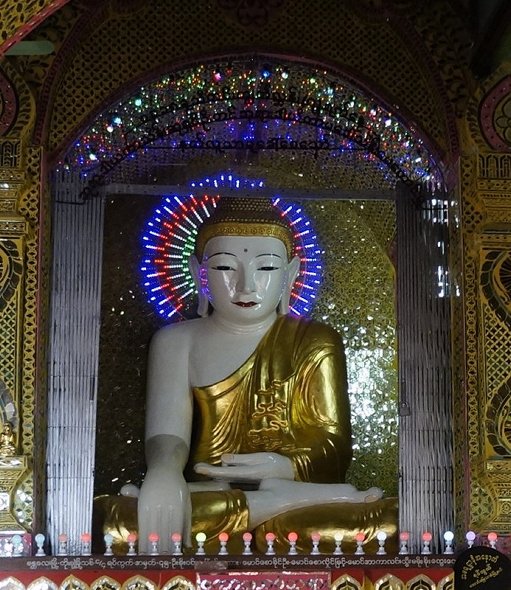
The Buddha with flashing lights behind his head as a halo Sits in the newly built monastery on the top of Mandalay Hill which we are taken to by tuk tuk to view the layout of Mandalay from the top 
This is the sign we see upon entering the Mandalay Palace grounds to visit the Culture Museum! 
The seven tiered Pyatthat roof of the palace, the centre of the compound, built like a walled city within Mandalay. The palace caught fire and was destroyed in March 1945, whilst it was held by the Japanese during the war, but reconstructed using prison and forced local labour in the late ‘90’s. (when young males in Mandalay had to contribute one day’s labour per month). 
A model of King Thibaw and his queen, the last royals to preside in Myanmar It was seized by the British in 1885. Afterwards, the British used the palace as the colony’s government house and British Club, packing King Thibaw off to India. 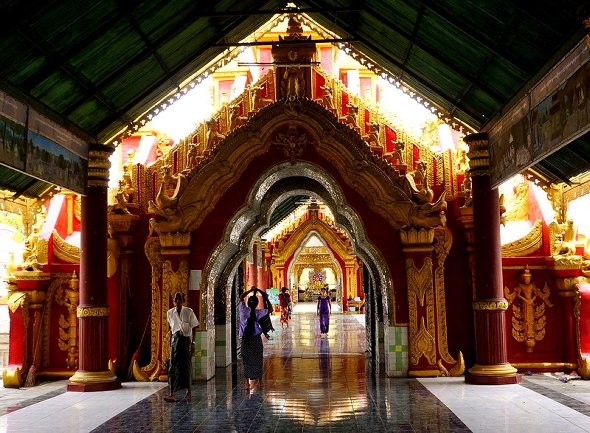
Huge hallway of the palace 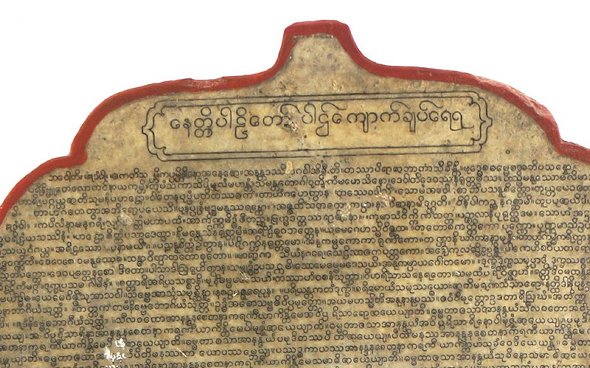
One of the stone tablets inscribed in ancient Burmese which form part of the ‘World’s Largest Book’ the Stone Inscription is a collection of 729 stone slabs on which Buddhist scriptures have been inscribed under King Mindon's instruction in the 18th century. The stone inscription from Kuthodaw Pagoda in Mandalay has been included in the UNESCO's Memory of the World Register 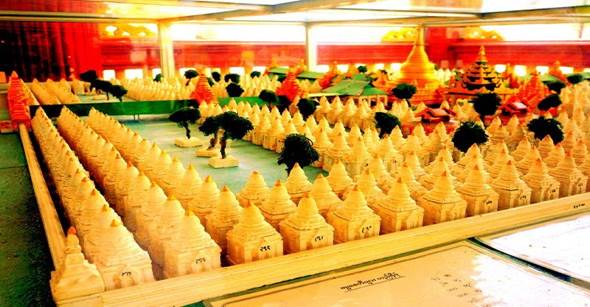
A model of the site showing how each tablet is protected by a stuppa Hammering slivers of gold nuggets inside leather wallets to make gold leaf 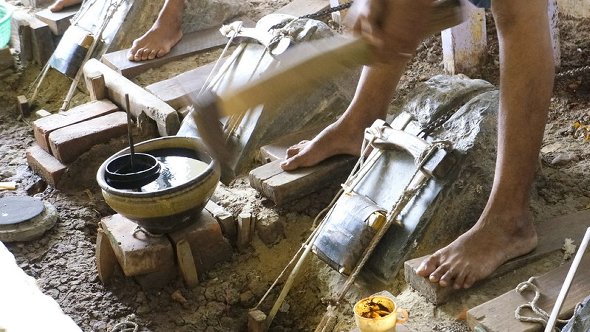 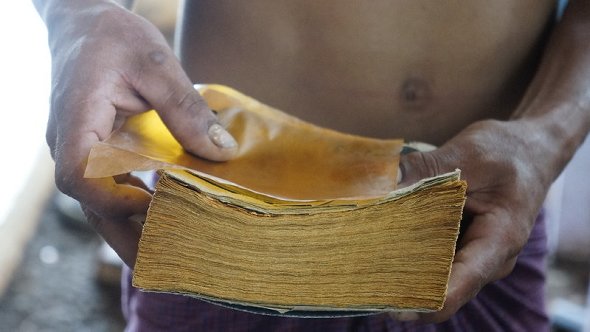
Each of these leaves of gold is then cut and put into another leather wallet for hammering into thinner sheets, and cut again, the procedure is repeated 5 times 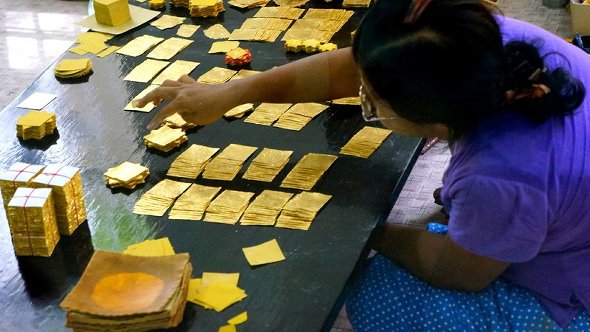 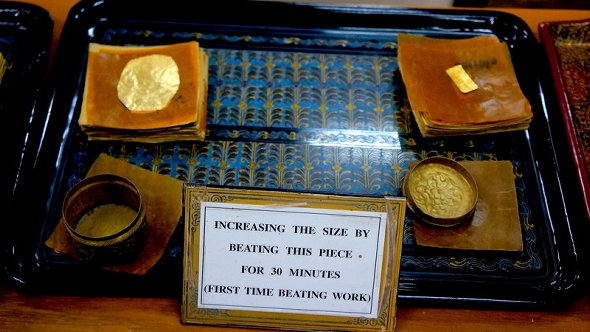 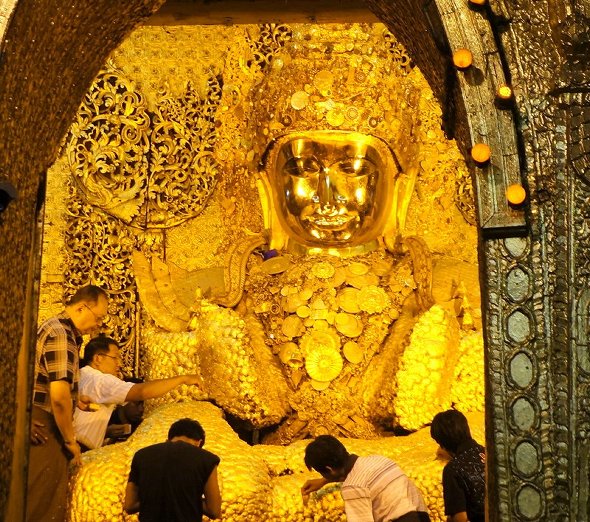 There are so many layers of gold leaf 915cm thick) on this important Buddha image that the shape is almost lost! It is the Mahamuni Buddha image, seized from Rakhaing State in North West Burma in 1784. It was believed to be of great age, and may have been cast during the 1st century AD, though many there believe it to date from a legendary visit by the Buddha in 554 BC. 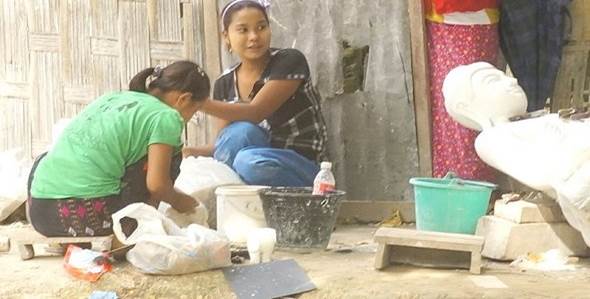
These girls are polishing the marble Buddha statues with wet and dry sandpaper Whilst the man below is just carving into a marble block to make a new one  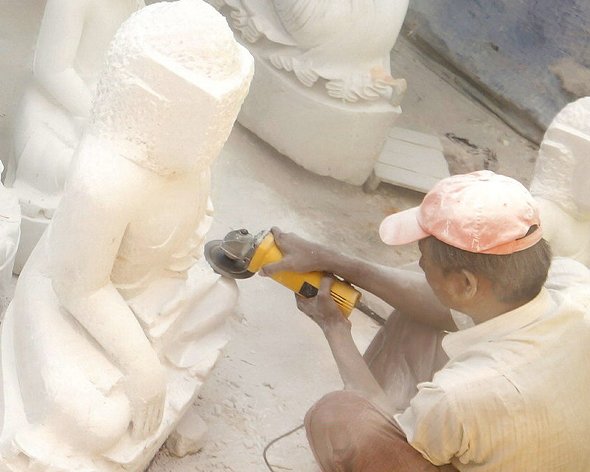

Wood carving is a very important skill in Burma Embroidery and weaving is also very important skills for Burmese decorations  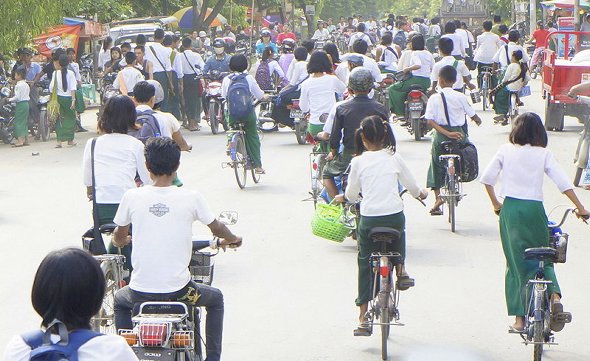
The secondary school is just disgorging it’s students at 3.30 p.m. 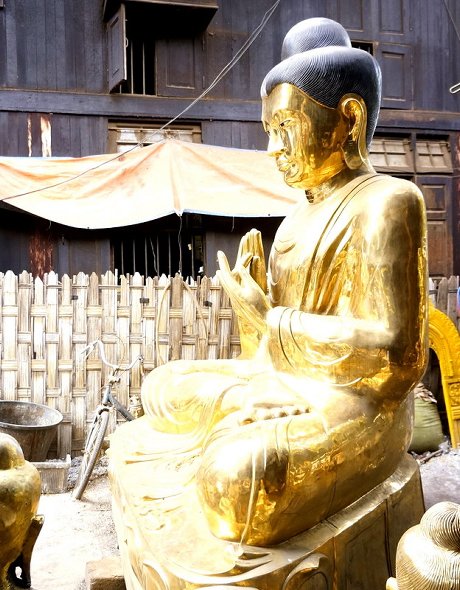
A finished brass Buddha image 
The clay mould in which the brass Buddha image is cast 
The waxed image being refined before the clay covers it 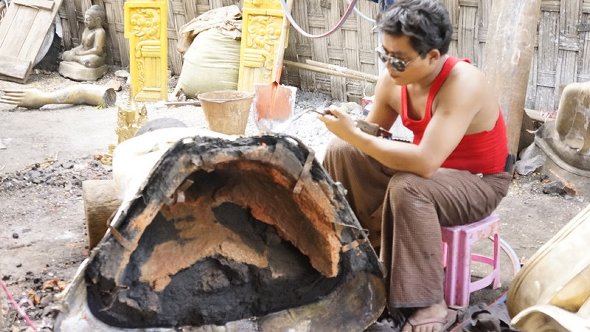
Spraying the cast 
This is the more normal line of transport in Mandalay! 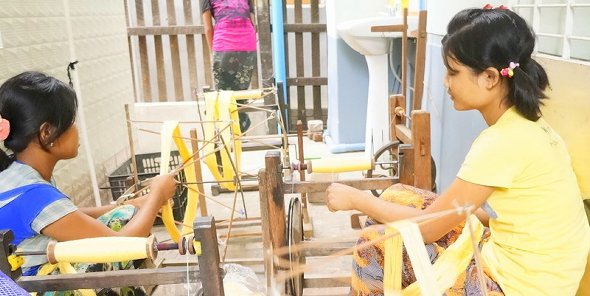
Girls spinning the first fine silk threads 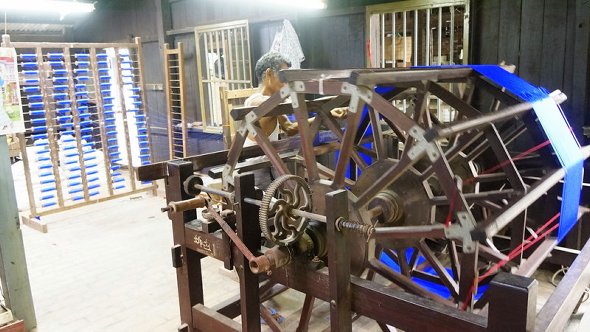
Silk loom at one of the weaving factories we visit 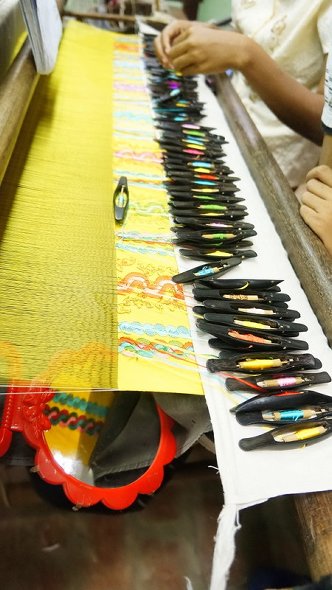
Gorgeous silk colours being meticulously woven into a piece of cloth by two women. | 



























